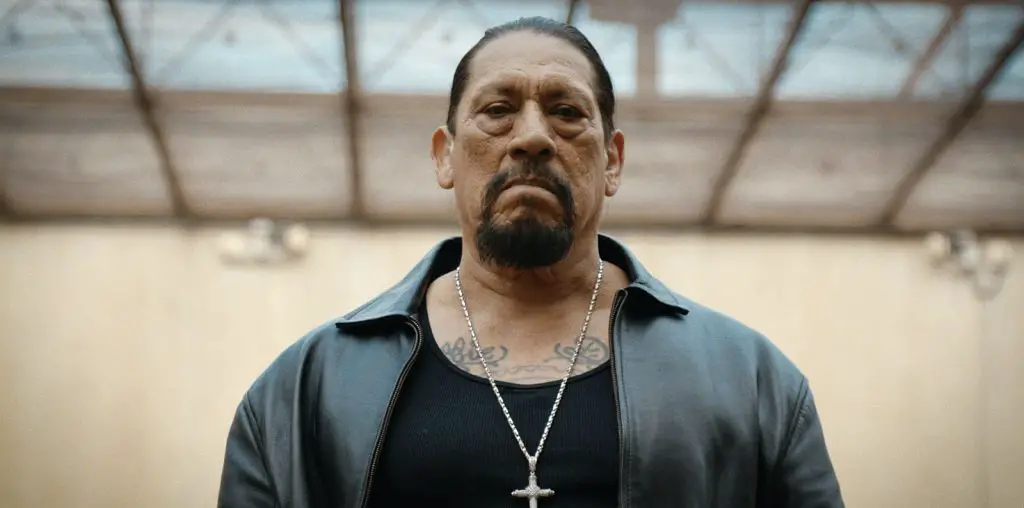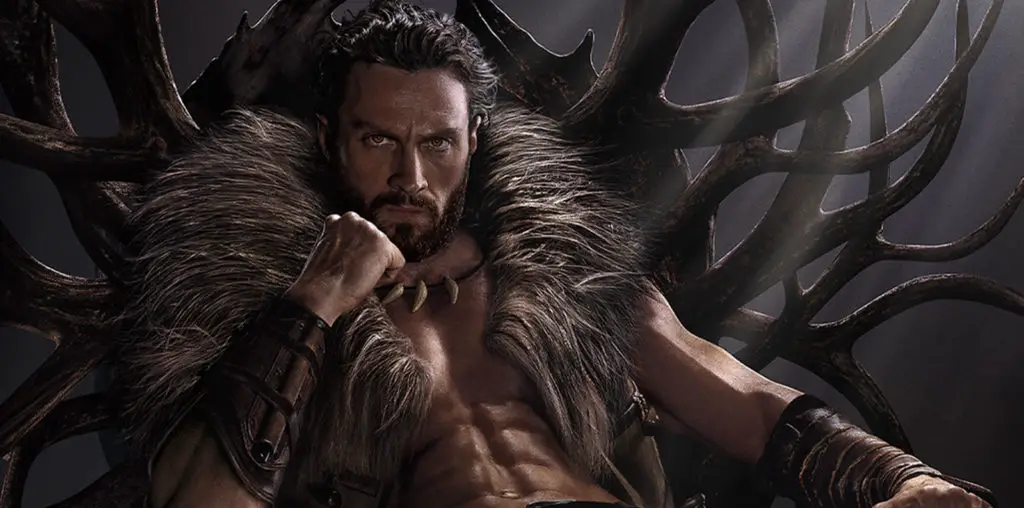
As Henry Oak, the seething human grizzly bear from “NARC,” Ray Liotta shoots, pistol-whips, and punches many of the film’s unlucky supporting characters. Some of the worst punishment is dealt out to Busta Rhymes and Richard Chevolleau, who play two drug-dealing thugs enduring a brutal interrogation from Liotta while shackled to chairs.
Circling his query like Roger Ebert closing in on a buffet table, Liotta hurls verbal and physical intimidation in the aggressive manner of Ted Nugent slinging arrows at a black-tail buck.
Reclining on a leather couch in a cavernous corner of Seattle’s Four Seasons Hotel, Liotta is sipping from a bowl of soup. Despite being weary from two straight days of fielding press questions, the New Jersey-born actor is more gregarious and welcoming than most of his high-strung onscreen characters. He’s dressed in black, a gold chain around his neck providing the wardrobe’s only hint of color.
The neutral clothes only accent his striking, blue eyes, which blaze with the same intensity they reflected in Something Wild and Field of Dreams. When amused or giggly, Liotta tilts his head forward and pushes out a mischievous, throaty snicker. Meanwhile, he’s lean and fit, a healthier, more upbeat shadow of “NARC”’s mammoth crimefighter, Oak.
“I gained 25 pounds and used several movie tricks to look bigger,” he reveals of the role, slurping down another spoonful of broth. “I’m seen wearing a coat much of the time, which added a lot. I put makeup under my eyes to look tired and worn out. Shaved my hair to make it look thin. Even in the way I moved, I wanted to make him very self-assured and strong. After all, his name is Oak.”
The resulting transformation is one of the most astonishing examples of onscreen shape-shifting since Liotta’s fellow accomplice in “Goodfellas,” Robert DeNiro, ballooned into a grotesque human whale for the final frames of “Raging Bull.”
There’s more to Oak than heft. He’s also a deeply conflicted crime fighter grieving the deaths of both his wife and his police partner. Like Lethal Weapon’s Martin Riggs, or John Travolta’s mourning agent in “Face-Off,” the character’s losses intensify his rage and focus on the job. However, don’t look for the slick, comic-book approach of directors John Woo or Richard Donner when “NARC”’s opening scenes flash from the screen. As its star is quick to point out, “NARC” instead embraces the herky-jerky, warts-and-all realism associated with such seventies classics as “The French Connection,” “Serpico,” and “The Onion Field.”
“When I talked to Joe Carnahan, the film’s director, I asked him how he wanted to shoot,” explains Liotta. “Joe said he was going for the rawness of seventies police films. ‘The French Connection’ was very cutting edge when it came out. Very brutal and very real. And it established a certain type of antihero, who wasn’t all good, and wasn’t all bad.”
In contrast to Oaks’ angry Goliath is “NARC”’s other key character, the understated Nick Tellis (Jason Patric), who reluctantly returns to police work after being suspended from the force. Following his involvement in a harrowing, gory drug bust in which a pregnant woman is shot, Tellis nurses his emotional wounds at home, assisted by a loving wife and new baby. The family’s growing financial problems eventually motivate Tellis’ return to the narcotics trenches, after being offered his badge back.
At its core, “NARC” is a psychological thriller, following Oak and Tellis as they investigate the murder of another narcotics officer. Accented by hand-held camerawork and a washed out, faded color scheme reminiscent of Traffic, the film is a striking antidote to goofy, juvenile crime outings like XXX. With its gritty, minimalist production values, you could almost call it “The Blair Witch Precinct.”
Meanwhile, its tormented duo has more in common with the Popeye Doyles and Frank Serpicos of the world than they do with Vin Diesel. The complexity of its law enforcers distinguishes “NARC” from other special effects dominated police films of recent years.
During a key scene, Officer Oaks confides in new partner Tellis from the driver’s side of a parked patrol car, revealing how his wife’s death from cancer has impacted the cop’s police work. Without this great love to anchor him, Oak explains, he has become a more effective crime fighter.
“I kinda figured that he had met his wife in junior high, and never touched anyone else once she died,” explains Liotta. “It all became about work, and the obsession about getting bad guys. That’s how he took out his anger.
“He became the first one in the door, and he didn’t care if he got shot or not. Losing his wife was devastating for this guy, but he wasn’t about to kill himself. He’d save that for the other guy.”
The edges of Liotta’s thin lips raise into a grin as he says this, his head again tilting forward before another smart-aleck cackle escapes the actor’s mouth. His mannerisms are darkly charming, bringing to mind the comment made by Lorraine Bracco while playing his onscreen wife in “Goodfellas.” After his character beats a bullying neighbor boy to a pulp, she confesses of his sinister charisma, “I had to admit – it turned me on.”
Get the rest of the interview in part two of SHADES OF RAY>>>

